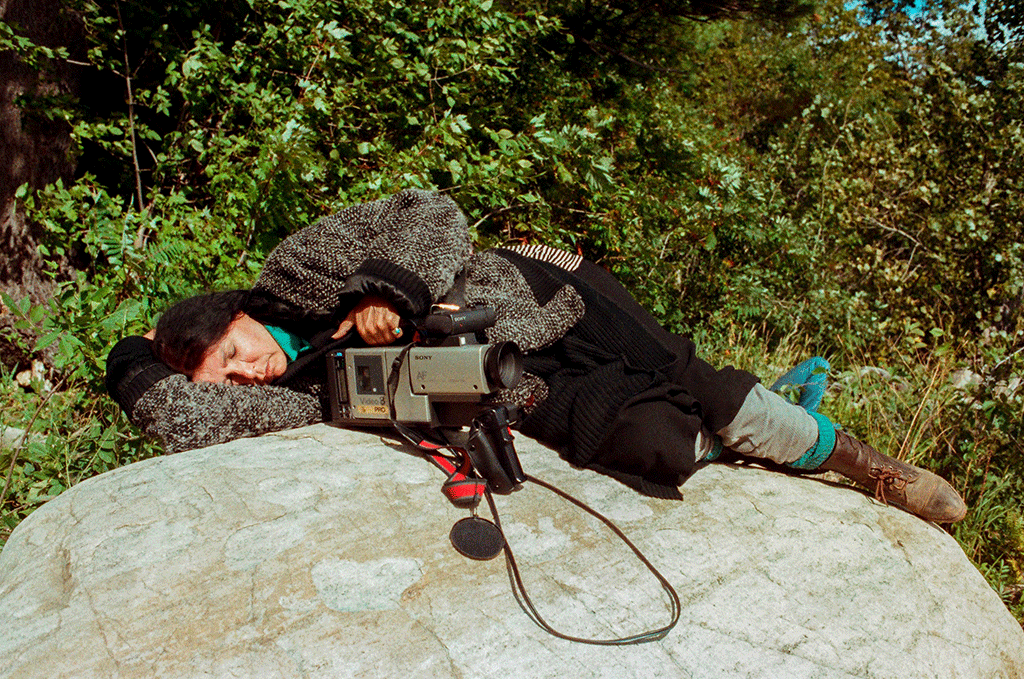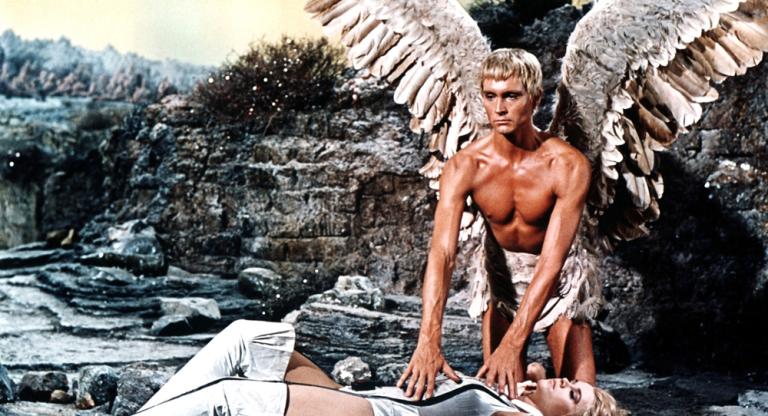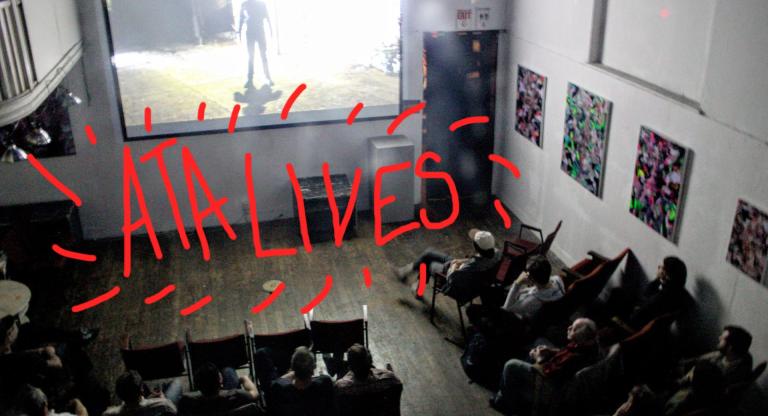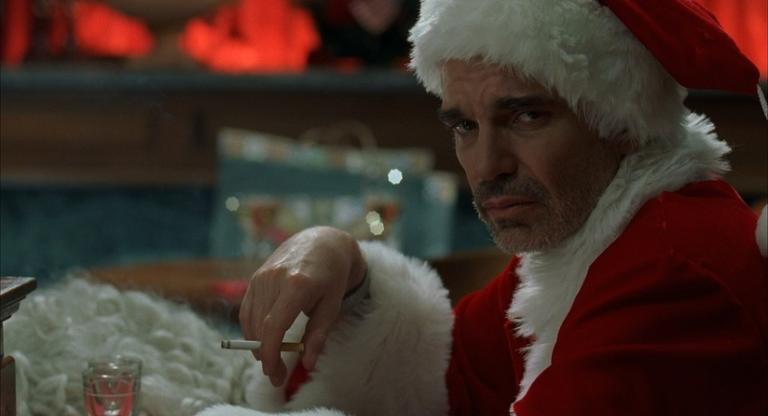Alanis Obomsawin has been singing her entire life, but first performed on a stage in 1960 at New York City’s Town Hall. Three years later, a 19th century schoolhouse in Long Island City was decommissioned, paving the way for it to become the P.S.1 Contemporary Art Center. Now MoMA PS1, the former schoolrooms are installed with a retrospective of film, music, painting, drawing, sculpture, and educational materials by Obomsawin, whose more than 60 films and as many years working with storytelling, documentary, and song have produced extraordinary opportunities to uplift the voices of her people, with special attention paid to the voices of children.
Obomsawin’s first film, Christmas At Moose Factory (1971), opens with a drawing of a brown dog standing on white crayon streaks of snow. The shot widens, revealing purple and orange laundry on a clothesline, evergreen trees, and a big sun in the blue sky. In voice-over, Obomsawin introduces the film and its location, an island village in the lowlands of James Bay in northern Ontario. “The children of Moose Factory speak Swampy Cree and also English as a second language. Here, they speak with their drawings about life around them and how they feel when Christmastime comes.”
The 16mm camera hovers and skates over cartoon scenes while the children narrate. Families, fauna, homes, festivities. “This is an Indian angel flying in the sky,” and then field recordings of multilingual church services and sledding. And drawings of sledding. The camera descends with the toboggan along the slope of a hill, audio and visual drifting in and out of descriptive alignment. The film concludes with portraits of the young artist-storytellers scored by a fiddle performance. Like much of Obomsawin’s work to come, Christmas at Moose Factory engages with harmonics and syncopation, encouraging a political and intimate listening experience.
The Children Have To Hear Another Story is arranged chronologically, weaving together props and production materials alongside projections and video monitors. An installation of more than a dozen original drawings from Christmas at Moose Factory are installed in the first gallery with the film. Nearby, a selection of felt and paper mâché painted animal masks worn in Old Crow: Sounds From Our People (1979) are exhibited alongside a video monitor with Obomsawin’s lyrical documentary portrait of weatherwomen and radio operators in the Yukon.
In addition to dreamlike children’s films and short- and medium-length documentary portraits, Obomsawin has also directed a number of feature non-fiction films, most notably Kahnesatake: 270 Years of Resistance (1993). At PS1, the explosive film is installed in a red-curtained room with rows of theater seating. During the 1990 Oka Crisis, heavily armed settler military police faced off with Mohawk land defenders who had gathered to protect sacred burial lands from a golf course expansion. Obomsawin spent 78 days filming the pivotal dispute from the inside, later editing the footage into a groundbreaking history film that widens the focus on centuries of dispossession and resistance in Canada.
The film strikes an especially relevant chord as students and activists around the world continue to be punished for encampments that demand an end to genocide and apartheid in Palestine. Obomsawin’s work has always had its finger on the rhythms of life, producing vital films that honor native voices and allow more honest stories to supplant old ones.
Alanis Obomsawin: The Children Have to Hear Another Story is on view through August 25 at MoMA PS1.



